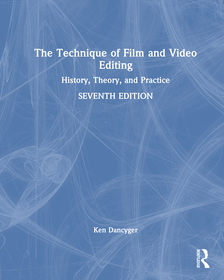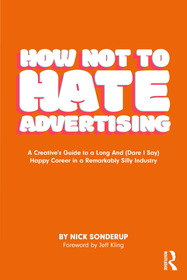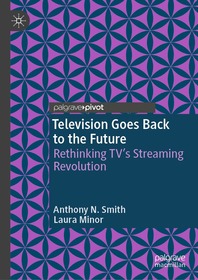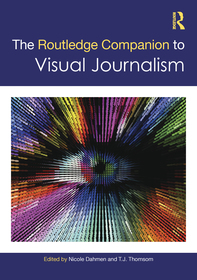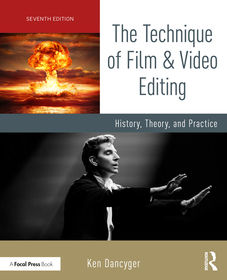
The Technique of Film and Video Editing
History, Theory, and Practice
-
20% KEDVEZMÉNY?
- A kedvezmény csak az 'Értesítés a kedvenc témákról' hírlevelünk címzettjeinek rendeléseire érvényes.
- Kiadói listaár GBP 53.99
-
25 793 Ft (24 565 Ft + 5% áfa)
Az ár azért becsült, mert a rendelés pillanatában nem lehet pontosan tudni, hogy a beérkezéskor milyen lesz a forint árfolyama az adott termék eredeti devizájához képest. Ha a forint romlana, kissé többet, ha javulna, kissé kevesebbet kell majd fizetnie.
- Kedvezmény(ek) 20% (cc. 5 159 Ft off)
- Kedvezményes ár 20 635 Ft (19 652 Ft + 5% áfa)
Iratkozzon fel most és részesüljön kedvezőbb árainkból!
Feliratkozom
25 793 Ft

Beszerezhetőség
Még nem jelent meg, de rendelhető. A megjelenéstől számított néhány héten belül megérkezik.
Why don't you give exact delivery time?
A beszerzés időigényét az eddigi tapasztalatokra alapozva adjuk meg. Azért becsült, mert a terméket külföldről hozzuk be, így a kiadó kiszolgálásának pillanatnyi gyorsaságától is függ. A megadottnál gyorsabb és lassabb szállítás is elképzelhető, de mindent megteszünk, hogy Ön a lehető leghamarabb jusson hozzá a termékhez.
A termék adatai:
- Kiadás sorszáma 7
- Kiadó Routledge
- Megjelenés dátuma 2025. december 22.
- ISBN 9781032849799
- Kötéstípus Puhakötés
- Terjedelem574 oldal
- Méret 235x191 mm
- Nyelv angol
- Illusztrációk 160 Illustrations, black & white; 156 Halftones, black & white; 4 Line drawings, black & white 700
Kategóriák
Rövid leírás:
This seventh edition provides a detailed, precise look at the storytelling choices an editor will have to make against a background of theory, history, and practice across a range of genres, featuring analysis of dozens of classic and contemporary films.
TöbbHosszú leírás:
This seventh edition of The Technique of Film and Video Editing provides a detailed, precise look at the artistic and aesthetic principles and practices of editing for both picture and sound.
Industry veteran Ken Dancyger puts into context the storytelling choices an editor will have to make against a background of theory, history, and practice across a range of genres, including action, comedy, drama, documentary, and experimental forms, featuring analysis of dozens of classic and contemporary films. This seventh edition includes new chapters on the developments of different genres and how these changes have affected editing decisions. This includes the recent predominance of biopic films, such as Oppenheimer (2023) and Maestro (2023), which will both be compared with earlier precedents, such as The Life of Emile Zola and Elizabeth. Then the book will also consider the changes and movements with melodrama, comedy, and soft satire.
This is an essential resource for students and professionals seeking both a contextual background as well as a practical guide for the best editing tips and tricks.
Praise for the Sixth Edition
"Ken Dancyger continues to update and improve this latest edition for what is already the ‘gold standard’ of books on editing. He knows good storytelling and how editing is integral to the process. He places this in historical context with theory and practice. If you are a student of editing, you should read this book."
Scott Arundale, Editor; Author of Modern Post: Workflows and Techniques of Digital Filmmakers
"Ken's additions to his book show all of us who love and study the craft of editing, a real understanding of the importance and stimulating impact editing has in helping tell a story, create mood, and shape characters."
Samuel D. Pollard, Academy Award Nominee, Emmy Award-winning Editor, Eyes on the Prize (1990), 4 Little Girls (1997), When the Levees Broke: A Requiem in Four Acts (2006), ACORN and the Firestorm (2017)
"From D.W. Griffith to MTV, from silent movies to action films, Dancyger explores not only history, techniques, and the social aspects of film and video, but he also looks at how technology has affected film and video making and editing. This isn't a quick read, but definitely worthwhile if you want to gain an understanding of what it takes to be an excellent director and editor."
Theano Nikitas, Camcorder & Computer Video
"Dancyger's book is an excellent introduction to the art of manipulating moving pictures and sound for students, amateurs, hobbyists and professionals alike."
Videomaker.com
Több
Tartalomjegyzék:
Acknowledgements
Introduction to the Seventh Edition
Section 1: History of Film Editing
Chapter 1 The Silent Period
Chapter 2 The Early Sound Film
Chapter 3 The Influence of the Documentary
Chapter 4 The Influence of the Popular Arts
Chapter 5 The Influence of Other Arts
Chapter 6 Editors Who Became Directors
Chapter 7 Experiments in Editing: Alfred Hitchcock
Chapter 8 Experiments in Editing II: Robert Altman
Chapter 9 New Technologies
Chapter 10 International Advances
Chapter 11 The Influence of Television and Theatre
Chapter 12 New Challenges to Filmic Narrative Conventions
Chapter 13 The MTV Influence on Editing I
Chapter 14 The MTV Influence on Editing II
Chapter 15 Changes in Pace
Chapter 16 The Appropriation of Style I: Limitation and Innovation
Chapter 17 The Appropriation of Style II: Limitation and Innovation
Chapter 18 The Appropriation of Style III: Digital Reality
Section 2: Goals of Editing
Chapter 19 Editing for Narrative Clarity
Chapter 20 Editing for Dramatic Emphasis
Chapter 21 Editing for Subtext
Chapter 22 Editing for Surprise
Chapter 23: Editing for Aesthetics
Section 3: Editing for the Genre
Chapter 24 Action
Chapter 25 Dialog
Chapter 26 Comedy
Chapter 27 Documentary
Chapter 28 Imaginative Documentary
Chapter 29 Innovation in Documentary I
Chapter 30 Innovation in Documentary II
Chapter 31 Innovation in Documentary III: The Experimental Documentary
Section 4: Changes in Genre
Chapter 32 The Deep Dive
Chapter 33 The Biopic
Chapter 34 The Melodrama and Celine Sciamma
Chapter 35 The Melodrama: Identity, Diaspora vs Tradition
Chapter 36 The Reimagining of the Screwball Comedy
Chapter 37 The Soft Satire
Chapter 38 The Minimalist Approach
Section 5: Principles of Editing
Chapter 39 The Picture Edit and Continuity
Chapter 40 The Picture Edit and Pace
Chapter 41 Ideas and Sound
Chapter 42 The Sound Edit and Clarity
Chapter 43 The Sound Edit and Creative Sound
Chapter 44 Innovations of Sound
Chapter 45 Nonlinear Editing and Digital Technology I
Chapter 46 Nonlinear Editing and Digital Technology II
Chapter 47 Conclusion
Filmography
Glossary
Selected Bibliography
Index
Több




